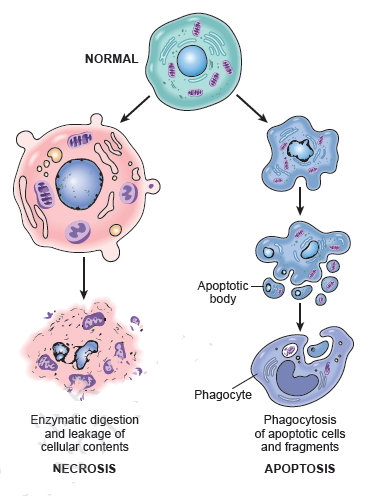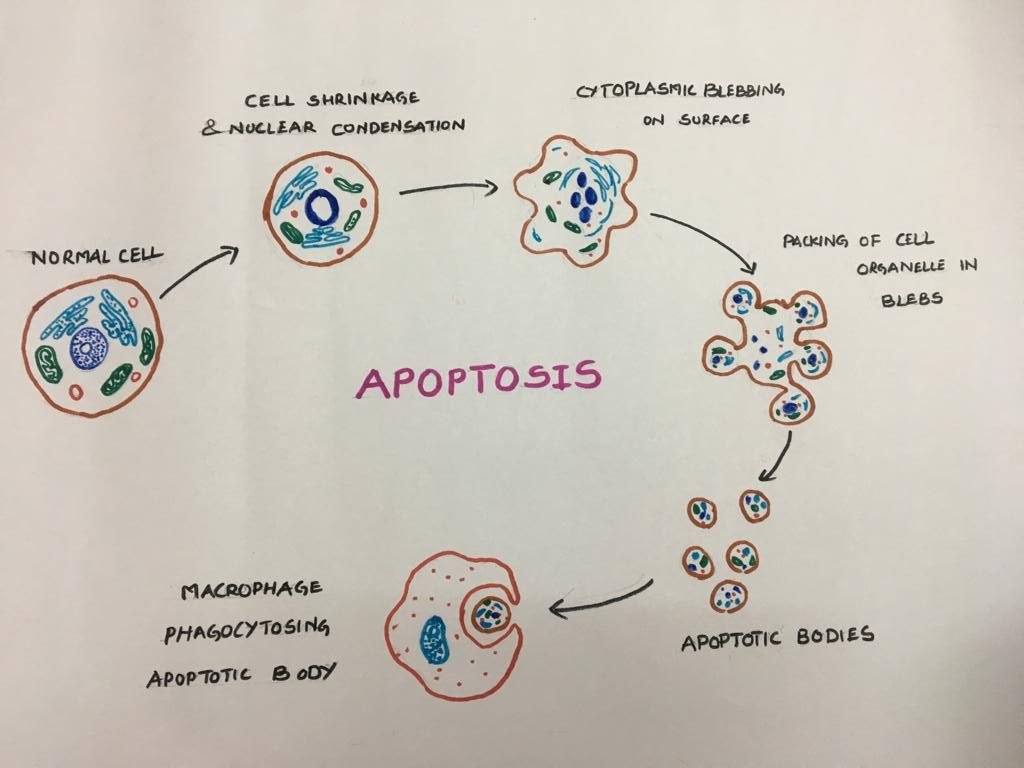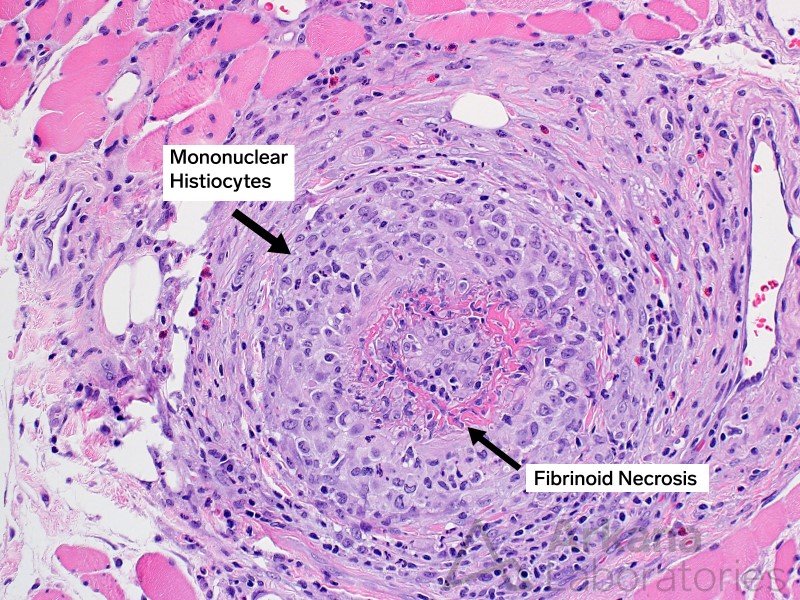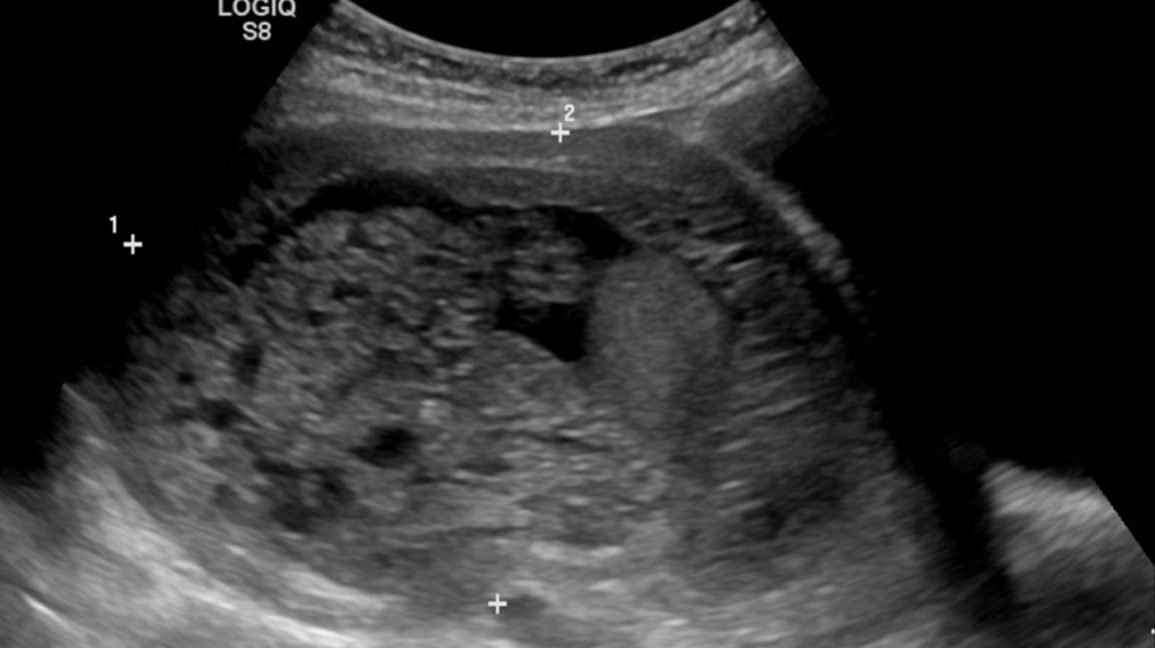Apoptosis vs Necrosis
There are two main types of cell death which are known as apoptosis (programmed cell death) and necrosis (accidental or harmful cell death).

APOPTOSIS
This mechanism of cell death is a regulated suicide, mainly known for not eliciting any kind of host reaction.
Causes:
- It can be physiologic to eliminate the cell which are now no more important for the body for maintaining the population of healthy cells in tissue, eliminating the toxic cells etc.
- It can also be pathological in which the body eliminates the cells which no longer are repaired after an injury. These damage can be DNA damage, accumulation of abnormal proteins in the cytoplasm of the cells, infections, atrophy of organs in case of duct obstruction in certain types of glands.
Morphological changes:
- Cell shrinkage – Size of the cell decreases with dense eosinophilic cytoplasm
- Condensation and fragmentation – Chromatin material aggregates below the nuclear membrane initially. later fragmentation of nuclear material occurs.
- Formation of cytoplasmic blebs & apoptotic bodies – Cell surface shows blebbing. Condensed cytoplasm, fragmented nuclear material and organelles are packed into the blebs which are separated from the cell forming apoptotic bodies
- Phagocytosis of apoptotic cells or cell bodies usually by macrophages which degrade them by lysosomal enzymes

Histology:
- Tissues stained with H & E show the apoptotic cell as round or oval mass of intensely eosinophilic cytoplasm with dense nuclear chromatin pattern
- Inflammatory reaction is absent in apoptosis

Mechanism:
Apoptosis is basically a result of activation of enzymes called caspases and there are two distinct pathways converges on caspase activation which are the mitochondrial (intrinsic) pathway and the death receptor (extrinsic) pathway.
Both of these pathways in the end activates the executioner caspases which cause endonuclease activation and breakdown of cytoskeleton and results in the formation of apoptotic bodies.

NECROSIS
This cell death is pathological all the time and induced by any kind of severe injury to the cell for which the main causes are hypoxia, ischemia, toxins , physical injury. In this case there is no formation of bodies as in apoptosis instead the cellular material leaks out and induces host immune response.
Features:
- Increased eosinophilia
- Nuclear changes (pyknosis, karyorrhexis and karyolysis)
- Accumulation of myelin figures
Types:
1. Coagulative necrosis – It occurs in all organs due to obstruction of vessels except in the central nervous system (CNS).

2. Liquefactive necrosis – Occurs in CNS (Brain) due to hypoxia cell death and leads to formation of pus. 
3. Gangrenous necrosis – It is usually applied to limb it doesn’t have any specific pattern of cell death. 
4. Caseous necrosis – It is encountered most commonly in tuberculosis infection; its appearance is cheese-like. 
5. Fat necrosis – Necrotic fat cells may appear and chalky Waite areas appear on tissue.

6. Fibrinoid necrosis – It is mostly seen in immune reactions; it has deposits of immune cells.

DIFFERENCE BETWEEN APOPTOSIS AND NECROSIS

References: Kumar.Abbas.Aster ;Robins and cotran ;Pathological Basis of disease; south Asian edition





